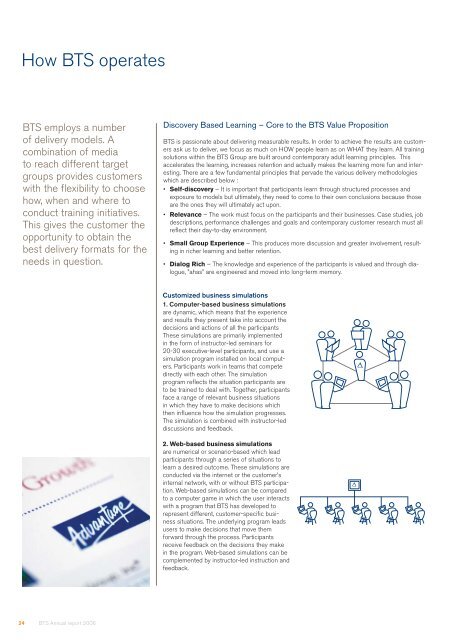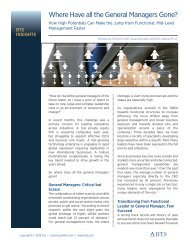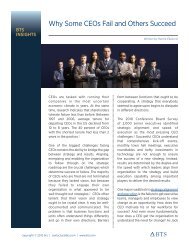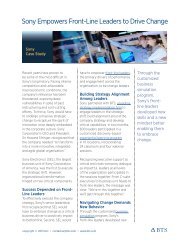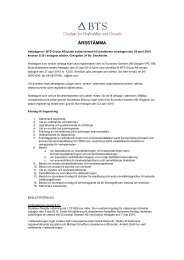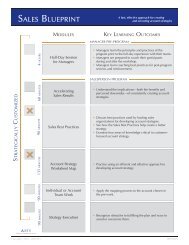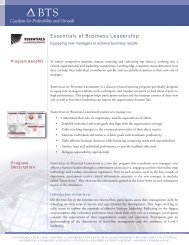Annual Report 2006 - BTS
Annual Report 2006 - BTS
Annual Report 2006 - BTS
- No tags were found...
Create successful ePaper yourself
Turn your PDF publications into a flip-book with our unique Google optimized e-Paper software.
How <strong>BTS</strong> operates<strong>BTS</strong> employs a numberof delivery models. Acombination of mediato reach different targetgroups provides customerswith the flexibility to choosehow, when and where toconduct training initiatives.This gives the customer theopportunity to obtain thebest delivery formats for theneeds in question.Discovery Based Learning – Core to the <strong>BTS</strong> Value Proposition<strong>BTS</strong> is passionate about delivering measurable results. In order to achieve the results are customersask us to deliver, we focus as much on HOW people learn as on WHAT they learn. All trainingsolutions within the <strong>BTS</strong> Group are built around contemporary adult learning principles. Thisaccelerates the learning, increases retention and actually makes the learning more fun and interesting.There are a few fundamental principles that pervade the various delivery methodologieswhich are described below :• Self-discovery – It is important that participants learn through structured processes andexposure to models but ultimately, they need to come to their own conclusions because thoseare the ones they will ultimately act upon.• Relevance – The work must focus on the participants and their businesses. Case studies, jobdescriptions, performance challenges and goals and contemporary customer research must allreflect their day-to-day environment.• Small Group Experience – This produces more discussion and greater involvement, resultingin richer learning and better retention.• Dialog Rich – The knowledge and experience of the participants is valued and through dialogue,”ahas” are engineered and moved into long-term memory.Customized business simulations1. Computer-based business simulationsare dynamic, which means that the experienceand results they present take into account thedecisions and actions of all the participantsThese simulations are primarily implementedin the form of instructor-led seminars for20-30 executive-level participants, and use asimulation program installed on local computers.Participants work in teams that competedirectly with each other. The simulationprogram reflects the situation participants areto be trained to deal with. Together, participantsface a range of relevant business situationsin which they have to make decisions whichthen influence how the simulation progresses.The simulation is combined with instructor-leddiscussions and feedback.2. Web-based business simulationsare numerical or scenario-based which leadparticipants through a series of situations tolearn a desired outcome. These simulations areconducted via the internet or the customer’sinternal network, with or without <strong>BTS</strong> participation.Web-based simulations can be comparedto a computer game in which the user interactswith a program that <strong>BTS</strong> has developed torepresent different, customer-specific businesssituations. The underlying program leadsusers to make decisions that move themforward through the process. Participantsreceive feedback on the decisions they makein the program. Web-based simulations can becomplemented by instructor-led instruction andfeedback.24<strong>BTS</strong> <strong>Annual</strong> report <strong>2006</strong>


